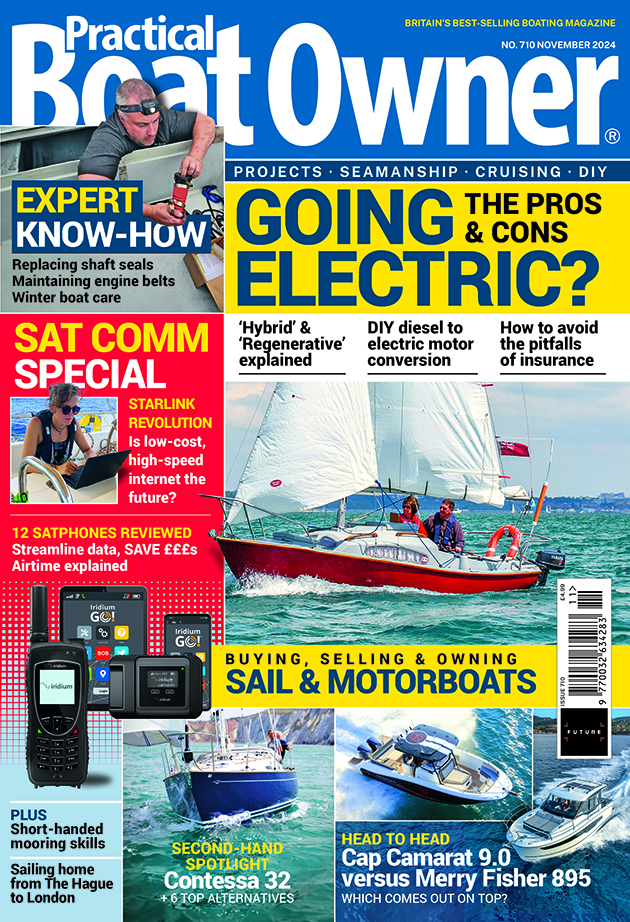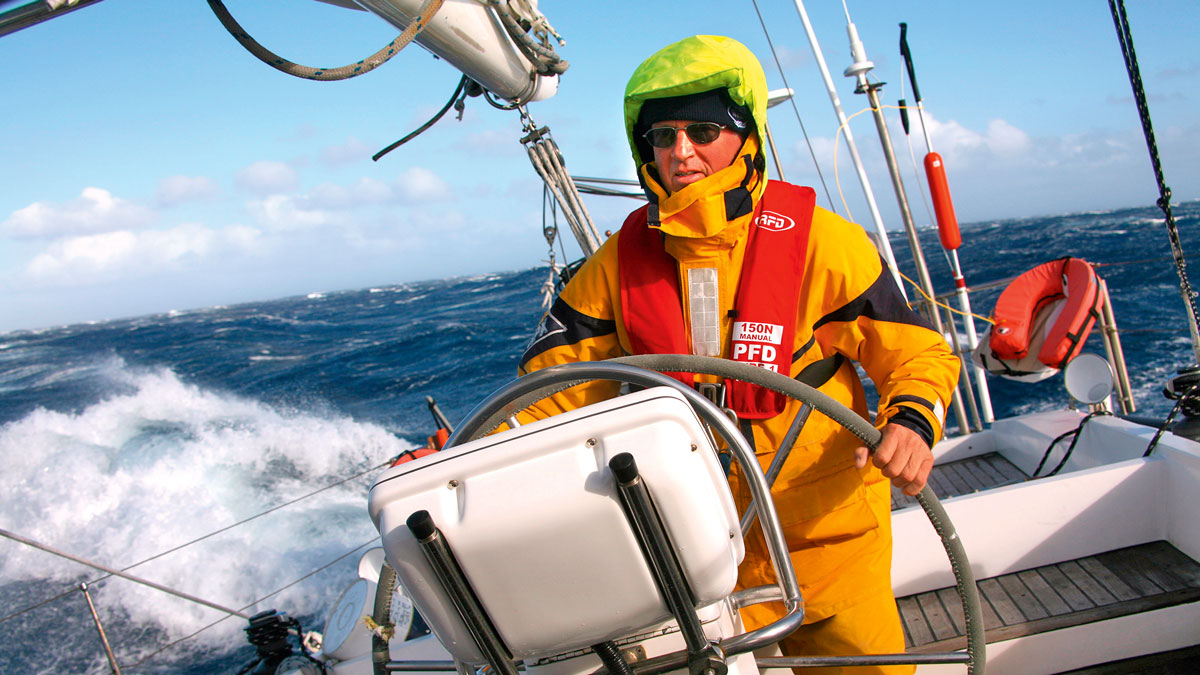You might one day need to sail your boat into a marina without an engine. Rupert Holmes explains useful techniques for boat handling in tight spaces
Serious, hardened cruising folk are likely to have great seamanship skills, but look the other way and you’ll find that many top racers do as well.
Take a good look at the way racing sailors operate, particularly boat handling in close-quarters situations around marinas at the start and end of a day’s racing, and there are plenty of tips the cruising sailor can make use of.
I found watching the Alpari World Match Racing Tour skippers manoeuvre their 12m (40ft) engineless yachts in the marina at Portimão on Portugal’s Algarve both interesting and instructive.
Even if you never plan to enter a marina without an engine – after all, most marinas will send out a workboat to pluck in a cruiser with engine problems – there are a lot of lessons to learn from looking at the techniques used that can be applied elsewhere.
These SM40 race boats are long and narrow with deep keels and carry their way for a long time, even though their displacement of 8,377lb (3,800kg) is relatively light for the 31ft (9.45m) waterline.
By comparison, modern wide-beam and shallow canoe-body cruisers tend to lose way more quickly: they also have a lot more windage and water flow over their keels, and rudders will stall at a higher speed – at which point you lose steerage.

Most marinas will send out a workboat if you arrive with engine problems, but it is still worth knowing boat handling skills so you can manoeuvre your boat in a tight space
However, more traditional and sleek designs will carry their way in a similar fashion – although they may not turn quite as readily!
The marina at Portimão is close to the mouth of the river so it’s important for the skippers to watch for current when entering the marina from the river, but there’s no stream to speak of in the berths nearest shore.
An important prerequisite on racing yachts is that the sail handling systems work well with minimal friction, including a mainsheet that is free to run and sails that are quick and easy to drop: an important characteristic for ease of handling on cruising yachts too.
On the SM40s here, the fully-battened mainsails are on quality roller- bearing cars and can be dropped in seconds.
However, even though these are expensive racing sails the crews make no attempt to flake them over the boom, or indeed tidy them in any other way – there’s no time for that until the boat is securely moored up.
In any case, if it turns out that you have reduced power too soon, this approach makes it quick and easy to partially re-hoist the sail and get moving again.
On a cruising boat, providing the kicker doesn’t have a solid vang, you can let the topping lift off and lower the aft end of the boom on the side deck which, when it’s lowered, gets the mainsail out of the line of sight of the helm.
If you need a little more power it can be partially hoisted, with a crew member ‘sheeting’ it by holding the leech.
Boat handling: Entering a marina under sail

This diagram shows the wind direction and location of the boat in the sequence where the yacht enters the marina under sail

1. Entering the marina: the headsail has already been lowered, but is still attached and available for use if necessary.

2. Turning the corner into the aisle leading to the berth.

3. The wind is on the beam here, but as the boat completes the turn the crew is already set to take the mainsail down.

4. They start lowering the mainsail…

5…. and just a few seconds later the head of the sail is almost down to the lower spreaders.

6. It’s left at that level where it can provide a little drive if necessary. There’s no danger of the mainsail pulling the bow downwind, as might happen if sailing slowly with just a little headsail.

7. The mainsail is now dropped further as the boat rounds up to the wind to come alongside the pontoon.

8. If necessary, the last bit of forward speed can be taken off by carefully surging warps round cleats on the pontoon.
Boat handling: Using a warp
Smart work with warps can turn an impending embarrassment into a slick boat handling manoeuvre.
Here, rather than heading into a berth with a following wind, the boat is spun head-to-wind and a warp passed ashore.
She’s then quickly pulled back into the berth – equivalent to applying reverse power with an engine – gaining steerage way in reverse before the bow blows off downwind.

1. Heaving a line accurately is an essential skill – 30 minutes of practice is time well spent in this discipline.

2. Pulling the boat back towards the dock – the heavier boat would need the line to be taken around a cleat.

3. The boat is now moving nicely backwards towards her portside-to-berth, with the skillet applying helm to help her turn.

4. More lines are passed ashore as she slips alongside…

5. …including a midships spring that helps hold the bows in and prevents the boat from reversing too far and the stern from bumping the deck.

6. Neatly alongside, even though the finger is much shorter than the boat.
Leaving a berth under sail
I’m aboard with the camera this time as the boat leaves her berth under sail. The wind is slightly forward of the beam on the first leg out of the marina aisle, almost reversed compared to when the boats were arriving.

1. With the sails ready for hoisting, we pushed out of the berth…

2. …with one crew member left on the dock to fend off.

3. We then started to hoist the mainsail…

4….and once it was halfway up, the crew on the dock gave a hearty shove to get us moving.

5. At the same time, the foredeck crew quickly hoisted the mainsail, bumping the halyard up the mast.

6. It’s not perfect sail trim, but it’s adequate to get us moving and safely into open water.
Editor’s Note: It is strongly recommended that you wear a lifejacket when you are on a boat
Sailing without an engine: tips to get home when it fails
Faced with an engine that won’t work, do we necessarily have to reach for the radio to summon help? Depending…
5 top causes of boat engine failure – and how to avoid them
Jake Kavanagh talks to Sea Start marine engineer Nick Eales about how to avoid the five major causes of an…
Heavy weather sailing techniques: how to protect your boat in storm conditions
Øyvind Bordal and Magne Klann explain the steps you need to take to protect your rig and sails when the…
Berthing a vessel: 2 clever ways with warps
In these days of fin keels, bow-thrusters and powerful engines, using warps for marina manoeuvres might seem an old-fashioned irrelevance…
Want to read more practical seamanship articles like Boat handling in a tight space?

A subscription to Practical Boat Owner magazine costs around 40% less than the cover price.
Print and digital editions are available through Magazines Direct – where you can also find the latest deals.
PBO is packed with information to help you get the most from boat ownership – whether sail or power.
-
-
-
- Take your DIY skills to the next level with trusted advice on boat maintenance and repairs
- Impartial in-depth gear reviews
- Practical cruising tips for making the most of your time afloat
-
-
Follow us on Facebook, Instagram, TikTok and Twitter








